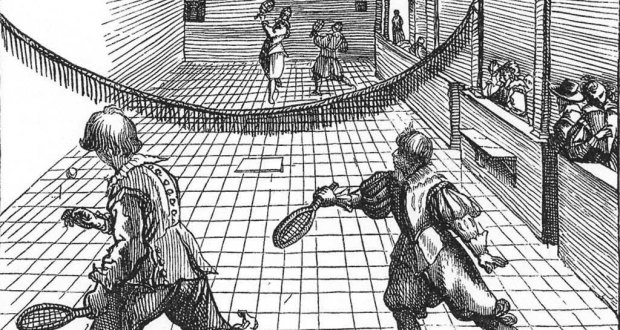You’re sitting on the couch, flipping through channels when you come across a tennis match. You stop to watch for a few minutes but quickly become bored.
After all, it seems like the same thing over and over again-two people hitting a ball back and forth across a net.
However, there are actually many interesting facts about tennis that you may not be aware of.
So whether you are a beginner or a professional athlete, these five facts will help you better understand the game of tennis.
1. Tennis originated in France in the 12th century
During this time, tennis was known as “jeu de paume” or “game of the palm” because players used their bare hands.
It wasn’t until the 16th century that tennis rackets were introduced.
Tennis comes from the French word “tenez” which means “to hold,” in reference to the way in which players held their rackets while serving.
And Racket derives from the Old French word “raquette” meaning “palm of the hand.”
Click here to know more about tennis betting tips
2. A jeu de paume-related tragedy claimed the lives of three French royalty.
Jeu de paume was a very popular game among French Kings in the 12th and 13th centuries but became suddenly unpopular when French monarchs began losing their heads.
Louis X (1289 – 1316)
More than any other French king, Louis X, who ruled in the 14th century, enjoyed the game of old tennis.
As a result of his enthusiasm for jeu de paume, he built the first indoor tennis courts in history around the 1290s, which he referred to as “the first indoor tennis courts.”
But after a tense handball match at Château de Vincennes, French King Louis X died of a cold.
Charles VIII (1470 – 1498)
Charles the VIII, a French king from 1483 to 1498, struck his skull as he went inside to play tennis in the castle-ditch together with his queen (Anne of Bretagne)
The French king did once regain consciousness, but it was all a sham. Nine hours after he fell, he died.
Francis III, Duke of Britanny (1518-1536)
While playing jeu de paume, he died after he had a cold, refreshing drink.
The deaths of these three French nobility were intertwined with jeu de paume.
In the 17th century, the game of jeu de paume began to decline in popularity.
The church grew concerned that the courts might become meeting places for restless crowds because there were more jeu de paume courts in the country than churches.
In Paris, there were 250 courts while in France, there were 1,500 at that time.
So this game was made available only to the monarchy after the previous church leaders petitioned to have public tennis courts closed.
So, as you can see, tennis has a pretty dark history when it comes to royalty.
3. In 1873, Major Walter Clopton Wingfield introduced the game of tennis we know and love today
The game that Major Wingfield introduced was a game for lawns and was very different from the games played indoors.
This new game could be played by anyone, regardless of their social class, and it quickly became popular.
Major Wingfield’s game spread like wildfire throughout England and then to America and the rest of the world.
4. The first Wimbledon tournament was held in 1877
The first Wimbledon tournament was held on July 9-19, 1877, and it was a men’s only event.
The prize for the winner was a silver cup that cost 12 guineas.
There were 22 players in the inaugural tournament, and the winner was Spencer Gore against William Marshall.
In June 1937, the Wimbledon tournament was televised for the first time in the world.
Now, the Wimbledon tournament is one of the most prestigious tennis tournaments in the world.
It is held every year at the All England Club in Wimbledon, London.
The tournament is two weeks long and features five different events: men’s and women’s singles, men’s and women’s doubles, and mixed doubles.
To date, Wimbledon is the only Grand Slam tournament that is still played on grass courts.
5. In 1986, yellow tennis balls were introduced for the first time.
The change was made to make the balls more visible on television.
Prior to 1986, Wimbledon used white tennis balls.
Not until David Attenborough persuaded the BBC in the late 1960s to broadcast the Wimbledon championships in colour because he believed it would be a good showcase for the newly developed technology.
In the days of smaller screens and standard definition, viewers had trouble identifying the white tennis balls when they soared or bounced over the white court lines.
The International Tennis Federation wanted to do something, so they researched and concluded that bright yellow was ideal for home spectators.
In 1972, the ITF allowed yellow or white tennis balls while Wimbledon continued to utilise white balls until 1986.
Final Thoughts
Now that you know a little more about tennis, hopefully, you will be more interested the next time you come across a match on TV.
Who knows – maybe you’ll even pick up a racket and give it a try yourself!

